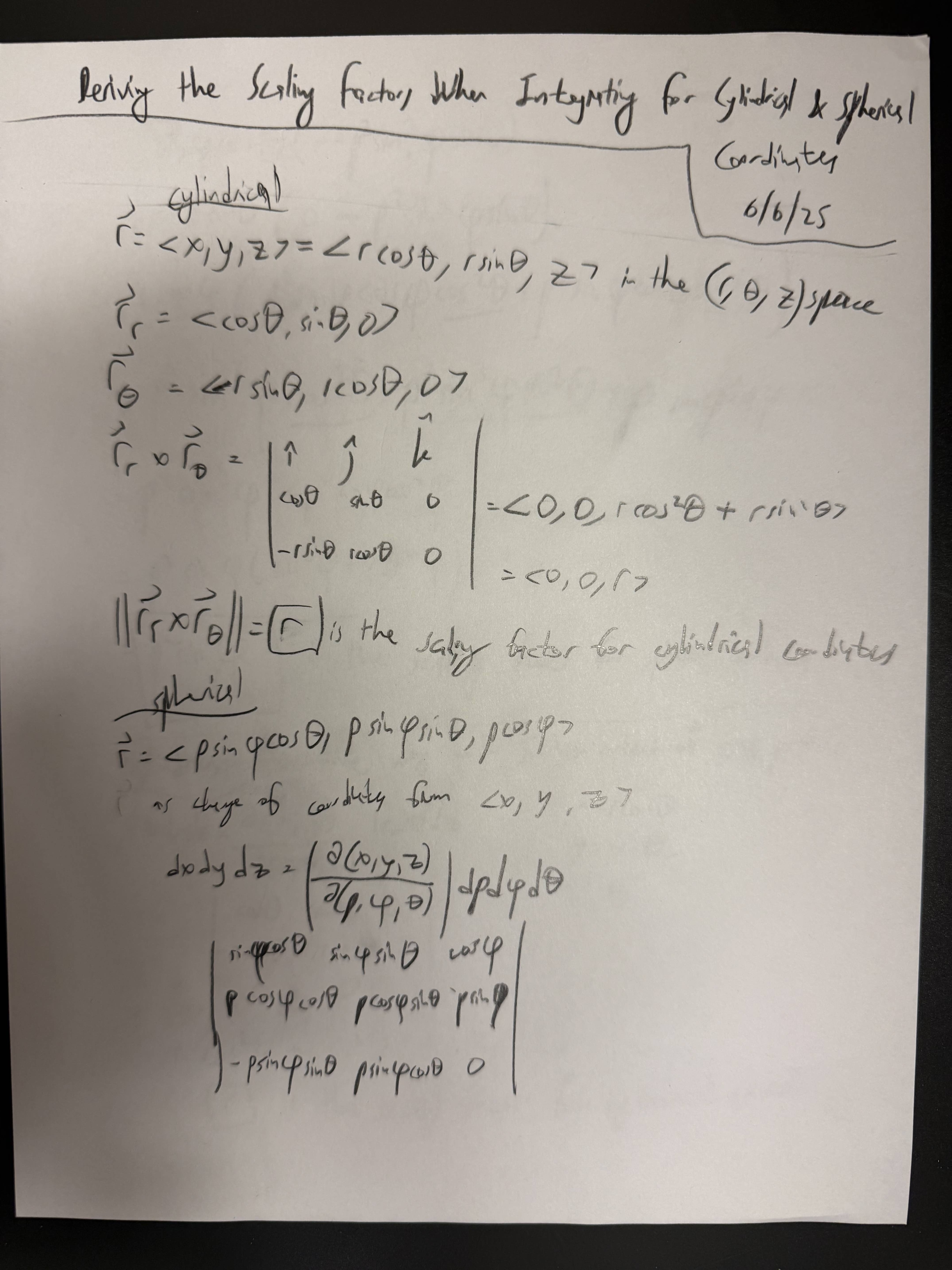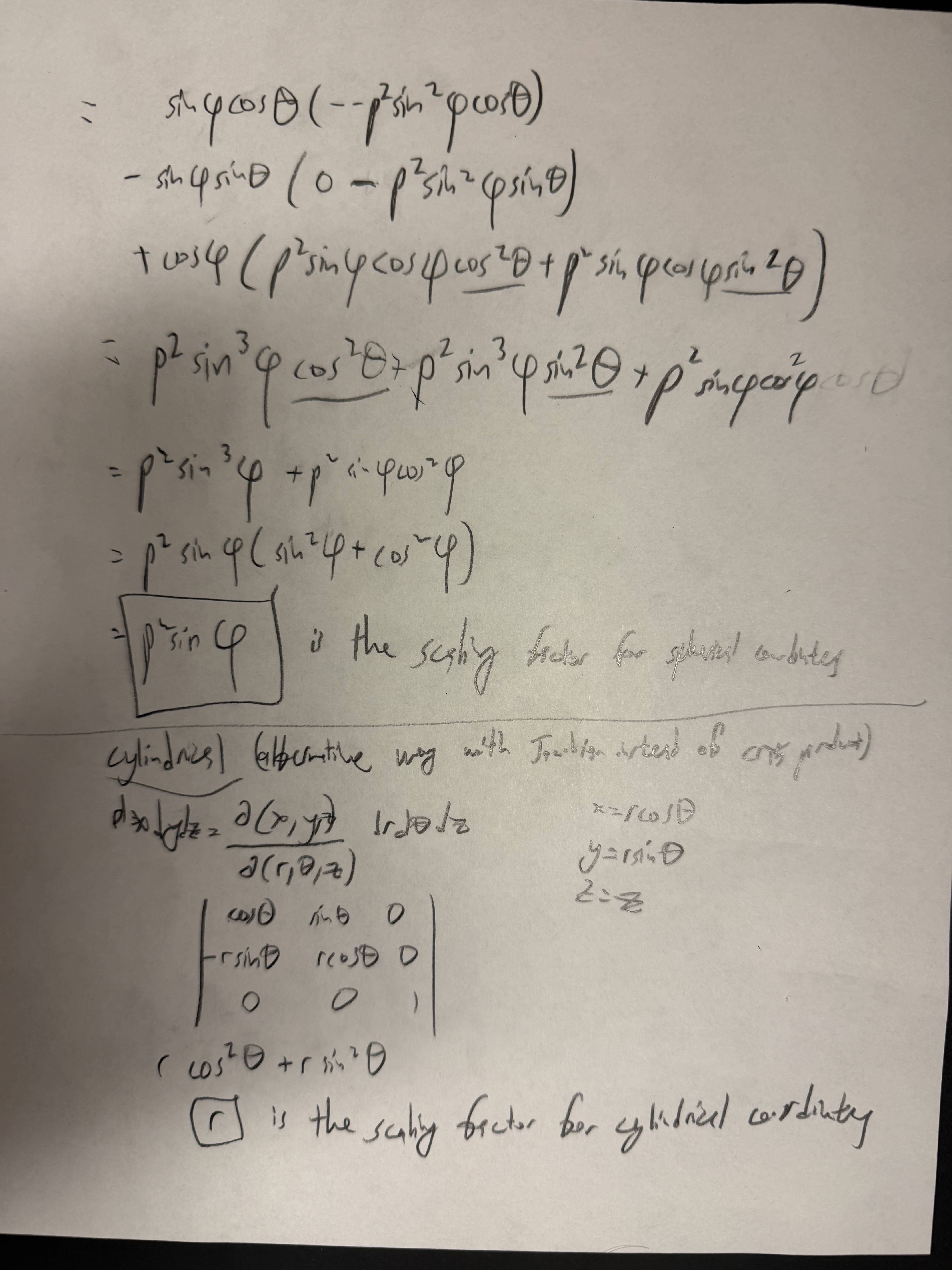Multivariable Calculus
I learned about multivariable calculus in spring quarter of freshman year in Math 52: Integral Calculus of Several Variables.
-
Spherical coordinates
- Colatitude
- Azimuthal angle
-
LatLng (except for GeoJSON where it is LngLat)
- Latitude
- Longitude
-
Co as in complementary (as in 90°-X) as in complementary angle (add up to 90°)
- cos - complement of sine
- cos(X)=sin(90°-X)
- cos - complement of sine
-
2D tangential form: Green's theorem
-
2D flux form: Green's theorem
-
3D tangential form: Stokes' theorem
-
3D flux form: Divergence theorem
-
Conservative vector field properties
- Cross-partial property: etc.
- Work done = 0
- Line integral is path-independent
- Fundamental Theorem of Line Integrals applies
-
Source-free vector fields
- Flux and flux are 0
-
Integrals
- Scalar line integral
- Vector line integral
- Surface integrals
-
Regions
- Open vs. closed
- Simple vs. not simple
- Simply connected - no holes
- Needed for a conservative vector field test
-
→ or
-
Positively oriented curve
- When walking along a curve, the surface should be to your left if your head points in the direction for it to be positive orientation.
- This means the curve is traversed in the counterclockwise direction
- Integrating over a positive orientation gives outward flux. " over negative orientation gives inward flux
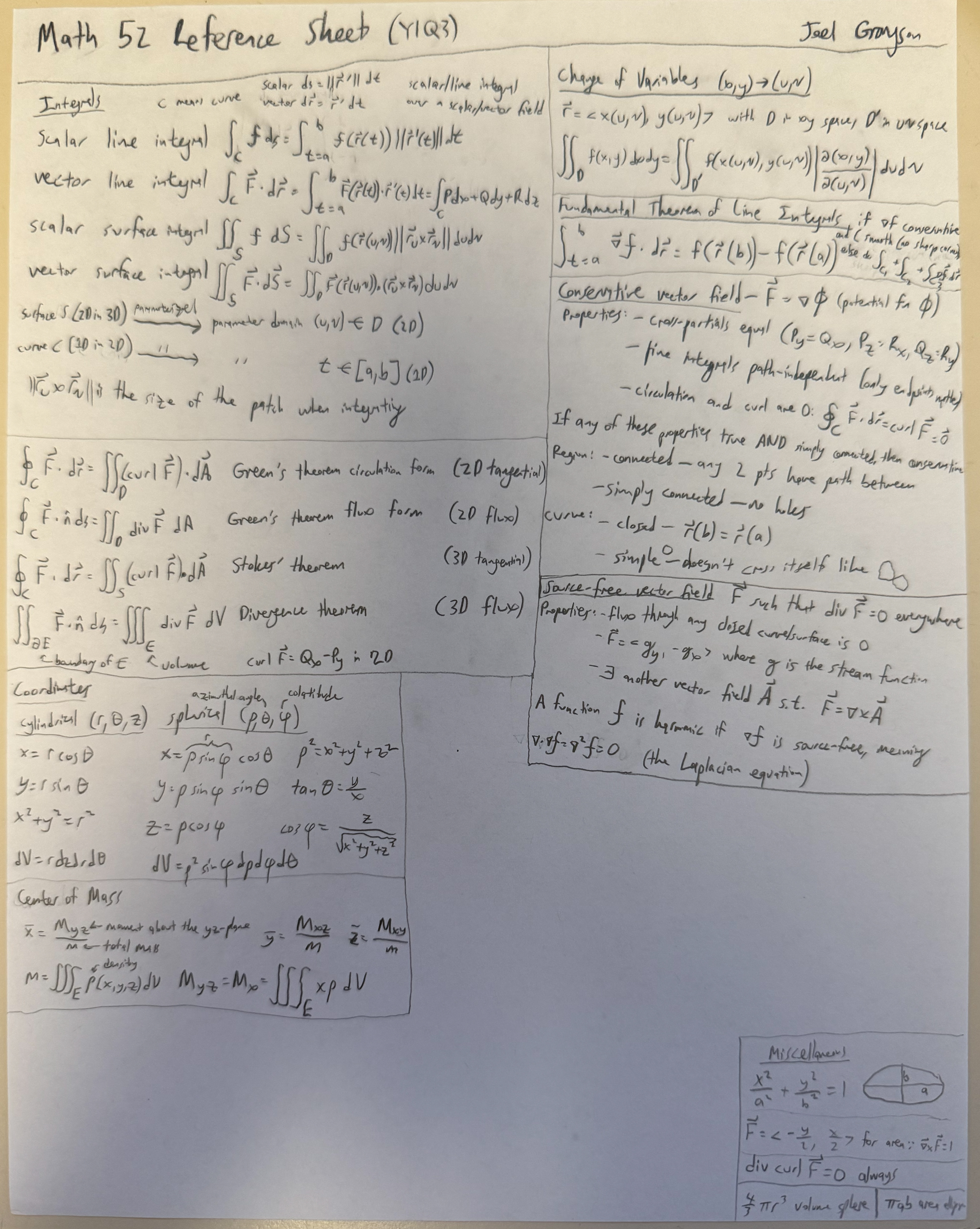
Old reference sheet

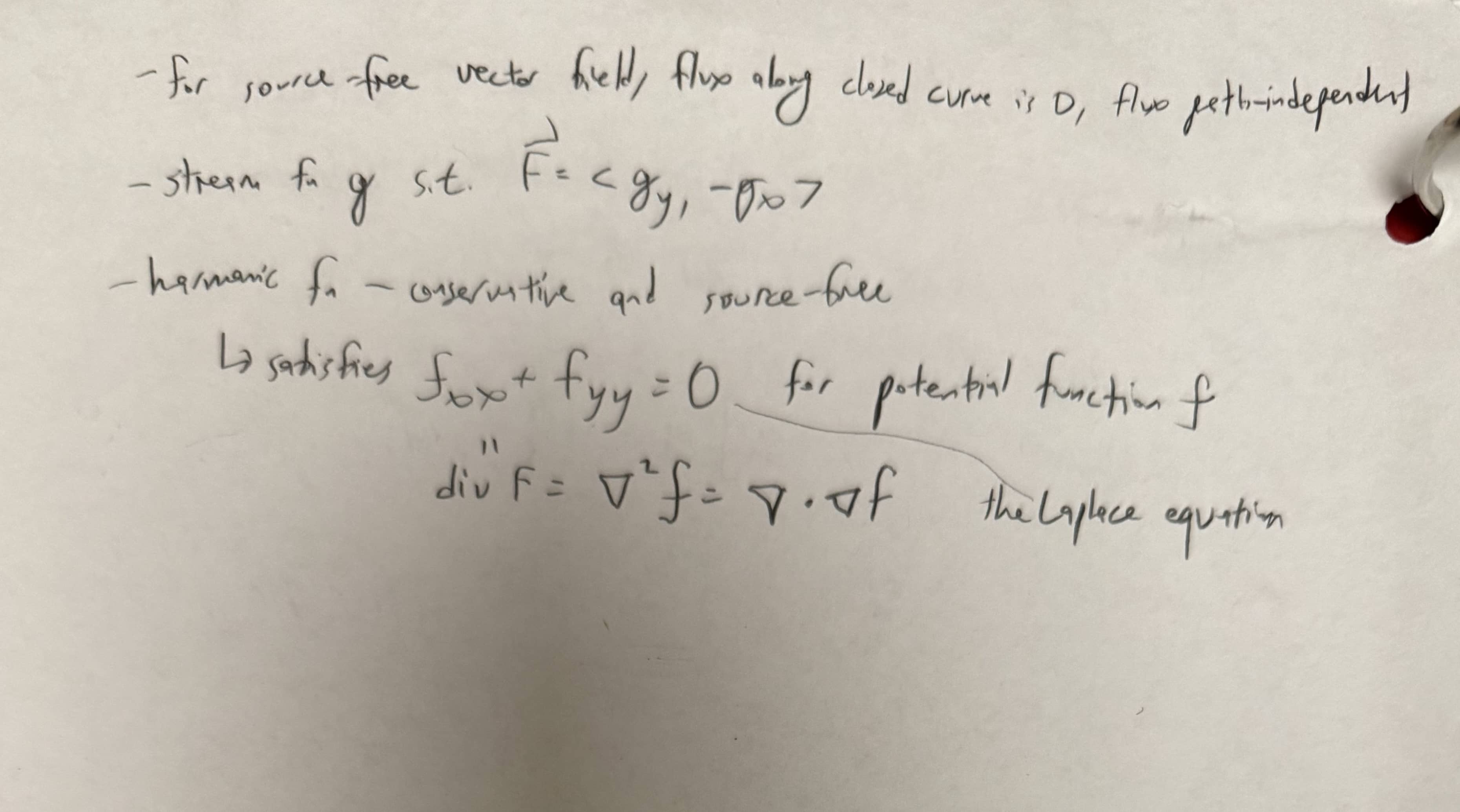
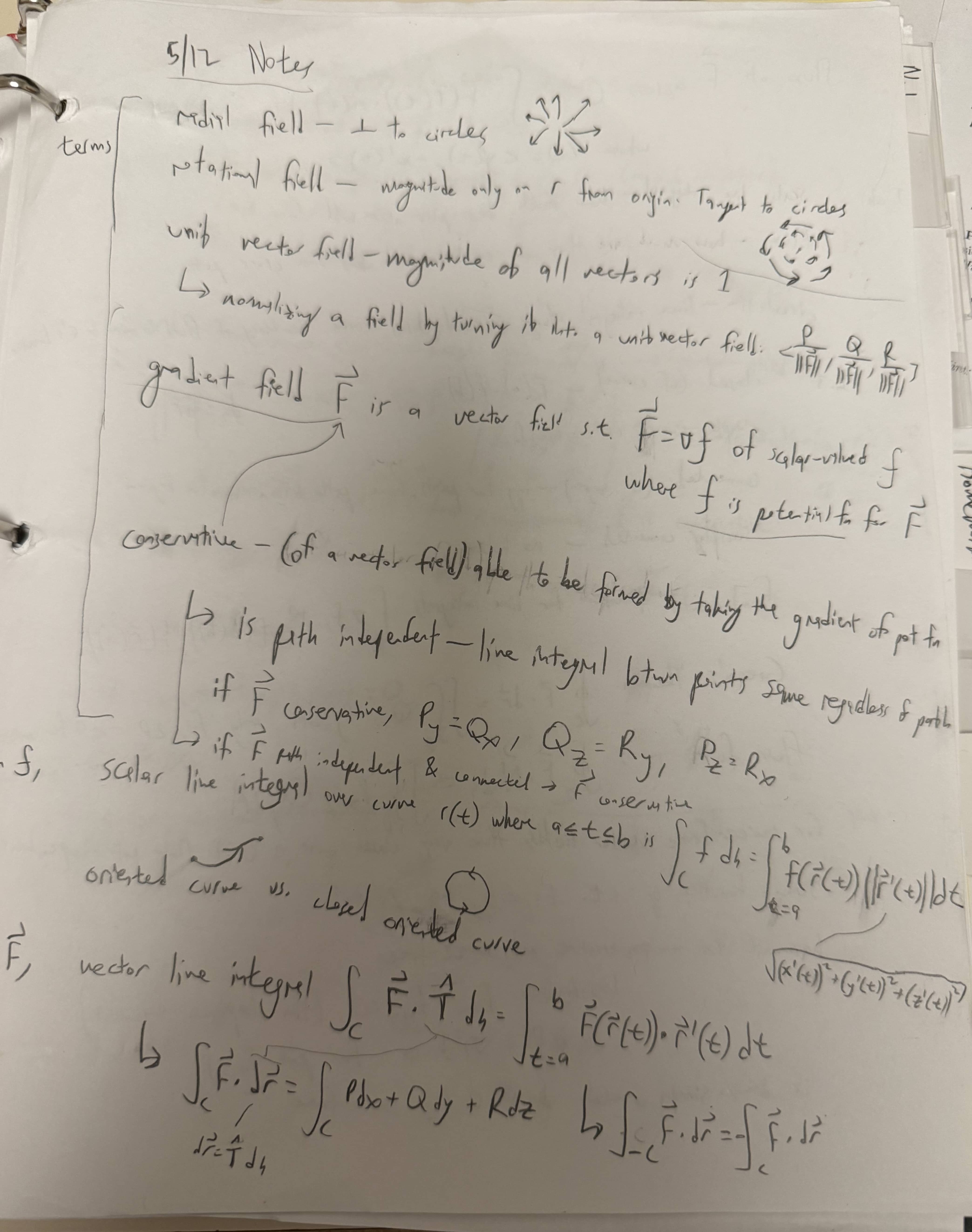
- Iterated integral - method of evaluating nested integrals by doing inner integrals each w.r.t. 1 variable treating the other variables as constants
First Principles Derivations
Why use in cylindrical coordinate integrals and in spherical coordinates?
